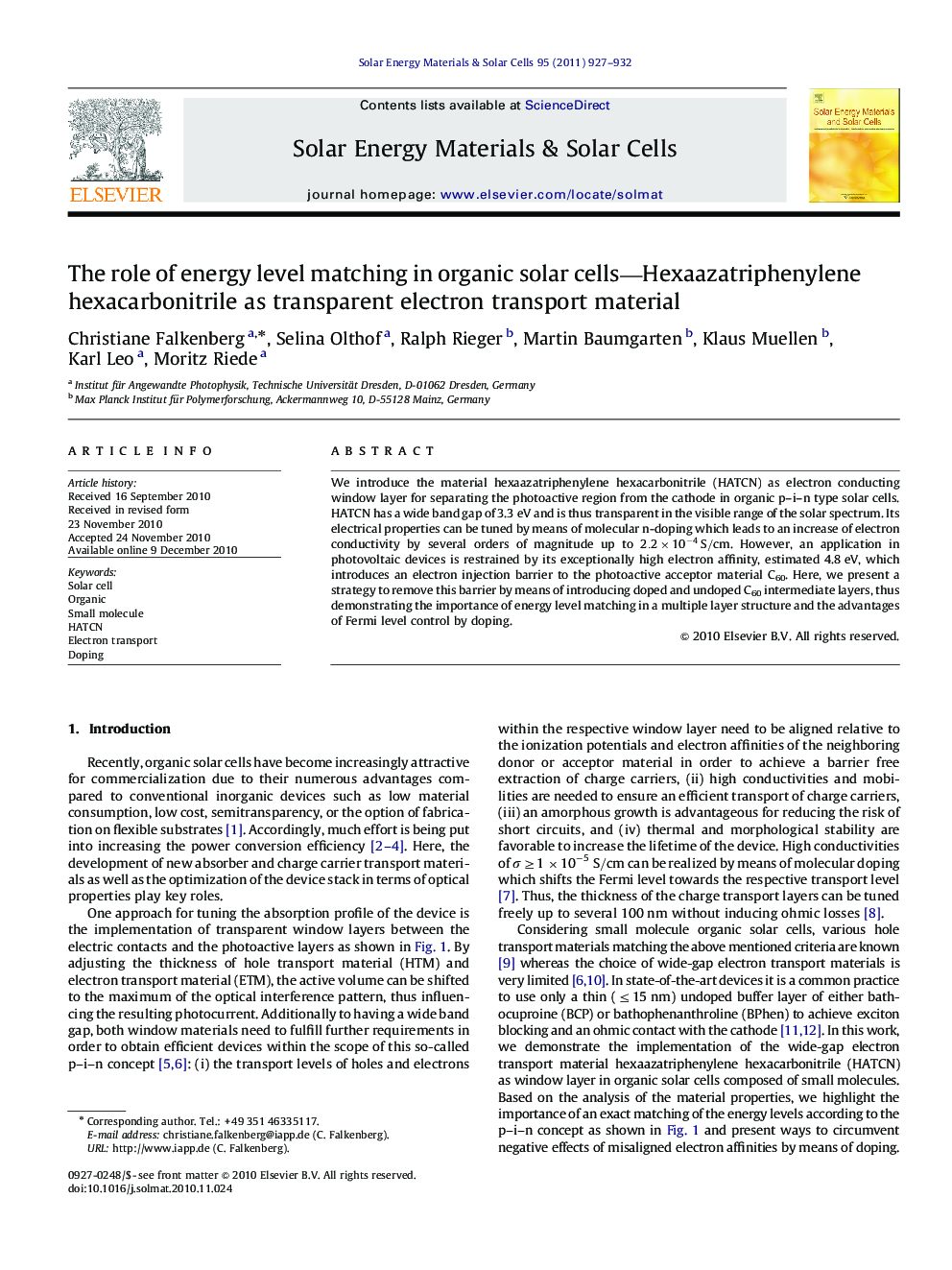| Article ID | Journal | Published Year | Pages | File Type |
|---|---|---|---|---|
| 79773 | Solar Energy Materials and Solar Cells | 2011 | 6 Pages |
We introduce the material hexaazatriphenylene hexacarbonitrile (HATCN) as electron conducting window layer for separating the photoactive region from the cathode in organic p–i–n type solar cells. HATCN has a wide band gap of 3.3 eV and is thus transparent in the visible range of the solar spectrum. Its electrical properties can be tuned by means of molecular n-doping which leads to an increase of electron conductivity by several orders of magnitude up to 2.2×10−4S/cm. However, an application in photovoltaic devices is restrained by its exceptionally high electron affinity, estimated 4.8 eV, which introduces an electron injection barrier to the photoactive acceptor material C60. Here, we present a strategy to remove this barrier by means of introducing doped and undoped C60 intermediate layers, thus demonstrating the importance of energy level matching in a multiple layer structure and the advantages of Fermi level control by doping.
